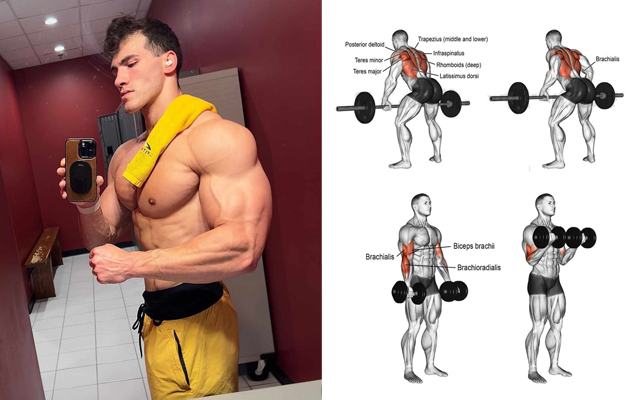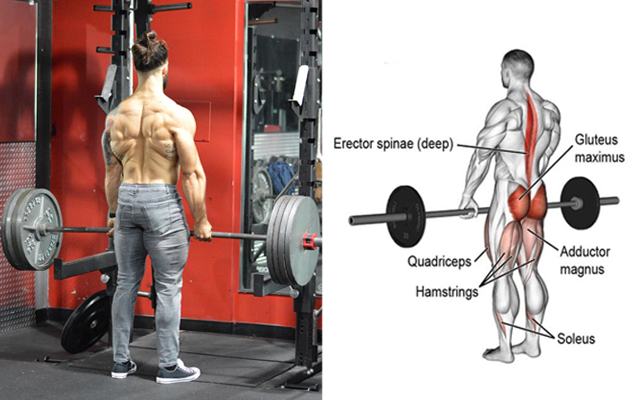The Romanian Deadlift, commonly known as the RDL, is a fundamental exercise revered in the world of strength training for its profound impact on the posterior chain. This powerful movement not only carves out stronger and more defined hamstrings and glutes but also plays a pivotal role in fortifying the lower back. However, the question often arises: does the RDL truly benefit the lower back, or does it pose a risk of injury?
SHOP FOR THE BARBELL ON AMAZON
In this comprehensive exploration, we delve into the mechanics of the RDL, its benefits for lower back strength, and how to execute this exercise with impeccable form to reap maximum rewards while safeguarding against potential harm. Whether you’re a seasoned athlete or a fitness enthusiast embarking on a strength journey, understanding the nuances of the Romanian Deadlift will elevate your training regimen and enhance your body’s resilience.
Introduction to Romanian Deadlifts
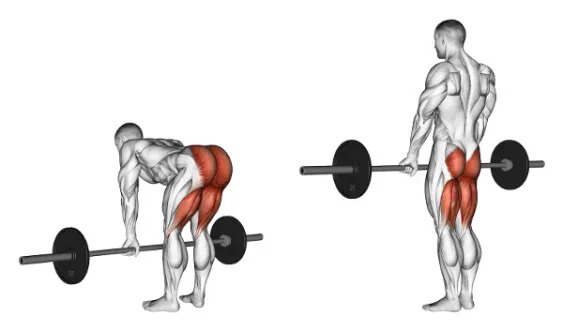
The Romanian Deadlift, often abbreviated as RDL, is a popular exercise in strength and conditioning programs. Named after the Romanian weightlifter Nicu Vlad who made it popular, the RDL is a variation of the traditional deadlift with a focus on the hip hinge movement.
Unlike the conventional deadlift, which involves lifting a weight from the ground, the Romanian Deadlift starts from a standing position, with the weight held at hip level. The movement involves hinging at the hips to lower the weight down the front of the legs, keeping the bar close to the body, and then using the hip muscles to return to the standing position.
The RDL is known for its effectiveness in targeting the posterior chain – a group of muscles that includes the hamstrings, glutes, and importantly for our discussion, the lower back. The exercise is praised for its ability to improve both muscular strength and flexibility, particularly in the hamstrings and lower back.
Muscles Targeted
When discussing the muscles targeted by Romanian Deadlifts (RDLs), it’s important to highlight the primary muscle groups involved in the exercise:
Hamstrings
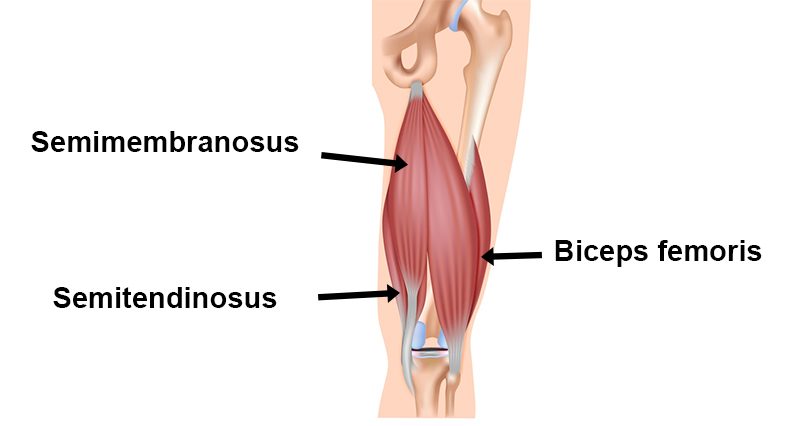
The hamstrings are a group of three muscles located on the back of the thigh: the biceps femoris, semitendinosus, and semimembranosus. Romanian Deadlifts place a significant emphasis on the hamstrings, particularly during the eccentric (lowering) phase of the movement as the hips hinge backward, stretching the muscles. The concentric (lifting) phase involves the hamstrings contracting to bring the hips back to the upright position.
Gluteus Maximus

The gluteus maximus, the largest muscle in the buttocks, is also heavily engaged during Romanian Deadlifts. As the hips hinge backward, the glutes work to extend the hip joint, contributing to the movement of bringing the torso back to an upright position.
Erector Spinae

The erector spinae muscles, which run along the length of the spine, are responsible for spinal extension and maintaining an erect posture. While Romanian Deadlifts primarily target the hamstrings and glutes, the erector spinae muscles also play a crucial role in stabilizing the spine throughout the movement, especially during the eccentric phase when the torso leans forward.
Adductor Magnus
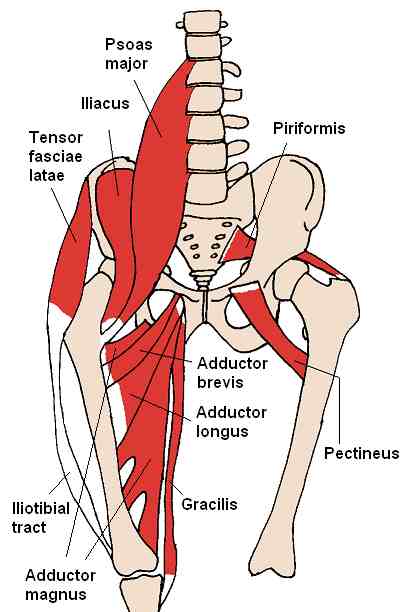
Although not as prominently as the hamstrings and glutes, the adductor magnus muscle, located on the inner thigh, is also activated during Romanian Deadlifts to assist in hip extension.
Core Muscles
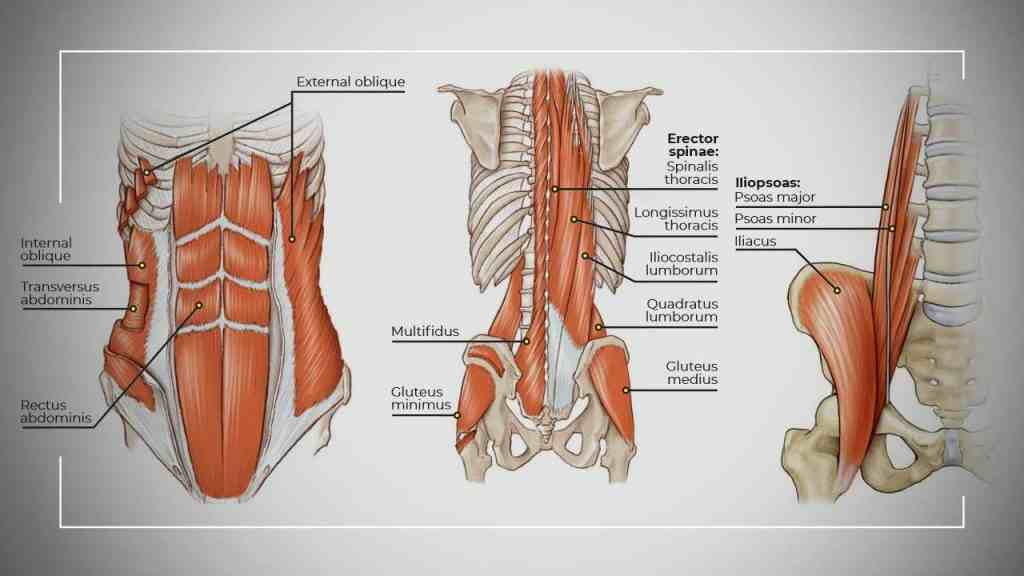
While not directly targeted by Romanian Deadlifts, the core muscles, including the rectus abdominis, obliques, and transverse abdominis, are engaged isometrically to stabilize the spine and pelvis throughout the movement. Maintaining core stability is essential for performing Romanian Deadlifts safely and effectively.
SHOP FOR THE ADJUSTABLE DUMBBELL SET ON AMAZON
By targeting these key muscle groups, Romanian Deadlifts are an efficient compound exercise that not only strengthens the posterior chain (hamstrings, glutes, and lower back) but also enhances overall lower body strength, stability, and functional movement patterns.
Benefits for Lower Back
The Romanian Deadlift (RDL) offers several benefits for the lower back, making it a valuable exercise for both strength training and injury prevention. Here’s how the RDL can be advantageous for your lower back:
- Muscular Hypertrophy: The RDL can increase muscle mass in the hamstrings, glutes, and lower back, which is essential for force development, power, and long-term improvements in sports performance.
- Positional Strength: It enhances the positional strength of the lower back, hips, and hamstrings, which is crucial for the first pull and transitions in Olympic weightlifting movements like the clean and snatch.
- Deadlift Performance: By increasing hamstring and lower back strength, the RDL can improve your conventional deadlift performance, particularly in the ability to maintain proper posture and handle heavier loads.
- Injury Prevention: Proper execution of the RDL can help resist injury caused by lower back stress and dysfunctional loading. It does so by increasing strength and coordination in the glutes, hamstrings, and lower back.
- Enhanced Movement Patterning: The RDL can improve the movement patterns involved in deadlifts, cleans, and snatches, contributing to better athletic performance and reduced risk of injury.
- Mobility and Flexibility: It can also improve the mobility and flexibility of the hips, which in turn can decrease the risk of injury and minimize lower back pain.
Incorporating the RDL into your workout routine can thus be highly beneficial for building a strong, resilient lower back, provided it is done with proper form and technique.
Common Mistakes
When performing the Romanian Deadlift (RDL), it’s crucial to avoid common mistakes to ensure the exercise is effective and safe. Here are some key errors to watch out for:
- Rounding the Lower Back: One of the most common mistakes is allowing the lower back to round during the descent phase of the Romanian Deadlift. This places excessive stress on the spinal discs and can lead to injury. Emphasize the importance of maintaining a neutral spine throughout the movement.
- Bending the Knees Too Much: Some individuals mistakenly bend their knees excessively during the Romanian Deadlift, turning it into more of a squatting motion. This reduces the emphasis on the hamstrings and places greater stress on the knees. You should focus on hinging at the hips while keeping a slight bend in the knees.
- Not Engaging the Core: Failing to engage the core muscles during the Romanian Deadlift can compromise stability and increase the risk of injury. You should brace your core throughout the movement to support the spine and maintain proper alignment.
- Overextending at the Top: At the top of the Romanian Deadlift, some people may hyperextend their lower back, leaning too far backward. This can strain the lower back and lead to discomfort or injury. People should finish the movement by squeezing the glutes and maintaining a neutral spine.
- Using Too Much Weight: Attempting to lift too much weight can compromise form and increase the risk of injury. People should start with a manageable weight and focus on perfecting their technique before progressing to heavier loads.
- Speeding Through the Repetitions: Performing Romanian Deadlifts too quickly can diminish the effectiveness of the exercise and increase the likelihood of using momentum instead of muscle strength. People should maintain a controlled tempo throughout each repetition, focusing on the mind-muscle connection.
- Neglecting Eccentric Control: The lowering (eccentric) phase of the Romanian Deadlift is just as important as the lifting (concentric) phase. Some people neglect to control the descent, allowing the weight to drop quickly. Emphasize the importance of maintaining control and resisting the weight on the way down to fully engage the muscles.
- Not Warming Up Properly: Failing to warm up adequately before performing Romanian Deadlifts can increase the risk of injury. Recommend dynamic stretches and mobility exercises to prepare the muscles and joints for the workout.
SHOP FOR THE WEIGHTLIFTING SHOES ON AMAZON
By addressing these common mistakes, you can perform the RDL more effectively and reduce the risk of injury. Remember, proper form is key to reaping the benefits of any exercise.
Proper Technique
Here’s a step-by-step guide on how to perform the Romanian Deadlift (RDL) correctly to ensure safety and effectiveness:
Equipment Needed: Barbell, dumbbells, or kettlebells
Step 1: Set Up
1. Begin by standing with your feet hip-width apart, toes pointing forward.
2. Hold the barbell, dumbbells, or kettlebells with an overhand grip (palms facing your body) at hip level. Your hands should be slightly wider than shoulder-width apart.
Step 2: Engage Core and Set Neutral Spine
3. Engage your core muscles by drawing your navel toward your spine.
4. Maintain a neutral spine throughout the exercise by keeping your chest up and shoulders back. Avoid arching or rounding your back excessively.
Step 3: Initiate Hip Hinge
5. Soften your knees slightly while keeping them relatively straight but not locked.
6. Begin the movement by pushing your hips back behind you while maintaining a slight bend in your knees. Imagine reaching your hips toward the wall behind you.
Step 4: Lower the Weight
7. Lower the weight toward the ground by maintaining a straight back and allowing the barbell or weights to slide down the front of your thighs.
8. Lower the weight until you feel a stretch in your hamstrings, but avoid rounding your back. Keep the weight close to your body throughout the movement.
Step 5: Maintain Position
9. Keep your chest lifted, shoulders back, and spine neutral as you lower the weight. Your head should be in line with your spine, looking straight ahead or slightly upward.
Step 6: Pause and Contract
10. Pause briefly at the bottom of the movement once you feel a stretch in your hamstrings.
11. Contract your hamstrings and glutes to initiate the upward movement.
Step 7: Return to Starting Position
12. Drive through your heels and engage your hamstrings and glutes to raise the weight back up.
13. Keep the barbell or weights close to your body as you return to the starting position, maintaining a straight back and neutral spine.
14. Squeeze your glutes at the top of the movement to fully extend your hips.
Step 8: Repeat
15. Repeat the movement for the desired number of repetitions, maintaining proper form and control throughout each repetition.
Tips for Proper Form:
- Focus on maintaining tension in your hamstrings and keeping your back straight throughout the movement.
- Avoid rounding your back or allowing your shoulders to slump forward.
- Keep the movement controlled and deliberate, avoiding any jerky or sudden movements.
- Start with lighter weights to master the movement pattern before gradually increasing the load.
- If you’re new to Romanian Deadlifts, consider performing the exercise in front of a mirror or with a trainer to ensure proper form.
SHOP FOR THE WEIGHTLIFTING BELT ON AMAZON
By following this step-by-step guide and focusing on proper form and technique, you can perform Romanian Deadlifts safely and effectively to target your hamstrings, glutes, and lower back muscles.
Alternative Exercises
When discussing alternative exercises to Romanian Deadlifts, it’s important to consider options that target similar muscle groups while offering variety and accommodating individual preferences and limitations. Here are some alternative exercises to consider:
Good Mornings
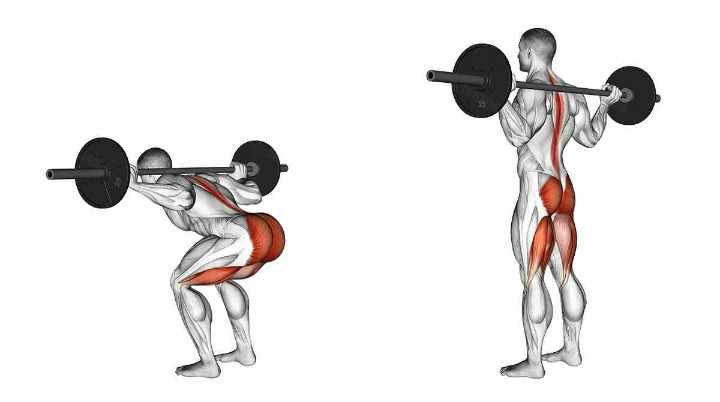
Good Mornings is a compound exercise that primarily targets the lower back, hamstrings, and glutes. To perform this exercise, start by standing with your feet shoulder-width apart and a barbell across your upper back. Keeping your back straight and core engaged, hinge at the hips and lower your torso forward until it is parallel to the ground. Then, return to the starting position by driving through your hips and squeezing your glutes at the top.
Stiff-Legged Deadlifts
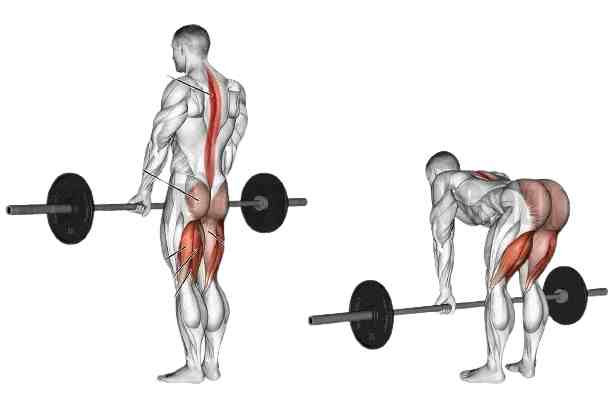
Stiff-legged deadlifts focus on the hamstrings and lower back while also engaging the glutes and core. Begin by standing with your feet hip-width apart and a barbell in front of you. Keeping your legs straight (but not locked), hinge at the hips and lower the barbell towards the ground while maintaining a neutral spine. Lower the barbell as far as your flexibility allows, then return to the starting position by contracting your hamstrings and glutes.
Back Extensions
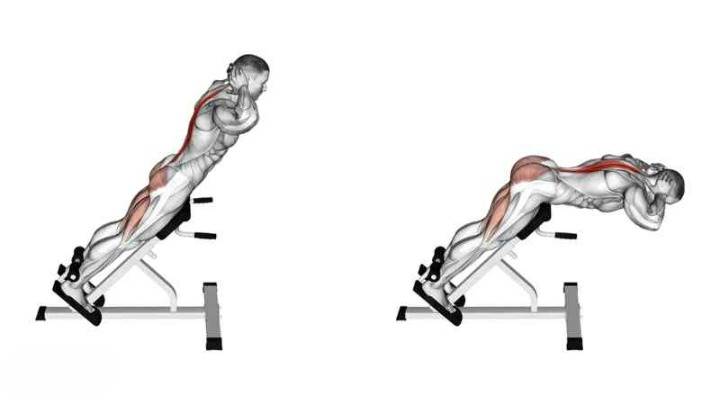
Back Extensions specifically target the lower back muscles (erector spinae) and can be performed using a back extension machine or a stability ball. To perform this exercise on a machine, position yourself with your hips resting against the pad and your feet secured. Lower your torso towards the ground while keeping your back straight, then lift your torso back up until it is parallel to the ground. To perform back extensions on a stability ball, lie face down with your hips on the ball and your hands behind your head. Lift your chest off the ball by engaging your lower back muscles, then lower back down with control.
Single-Leg Romanian Deadlifts
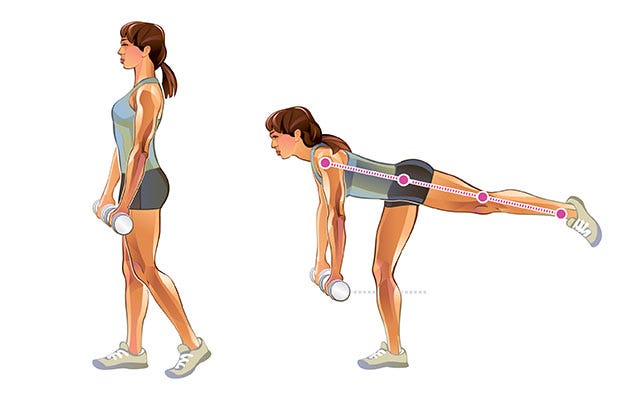
Single-Leg Romanian Deadlifts provide unilateral leg and lower back strengthening benefits while also improving balance and stability. Begin by standing on one leg with a dumbbell in one hand or a barbell across your upper back. Hinge at the hips and lower the weight towards the ground while simultaneously extending your free leg straight behind you for balance. Keep your back straight and core engaged throughout the movement, then return to the starting position by driving through your standing heel.
Incorporating these alternative exercises into your workout routine can provide variety and help target similar muscle groups as Romanian Deadlifts. As always, focus on maintaining proper form and technique to maximize the effectiveness and safety of each exercise.
Romanian Deadlift vs Conventional Deadlift
The Romanian Deadlift (RDL) and the Conventional Deadlift are both highly effective strength training exercises, but they have some key differences:
- Starting Position and Range of Motion: The Conventional Deadlift starts from the floor and involves lifting the weight all the way up to hip level. On the other hand, the RDL starts from a standing position with the weight at hip level and involves lowering the weight down to about shin height before returning to the starting position.
- Muscle Engagement: Both exercises target the posterior chain, but they emphasize different muscles. The Conventional Deadlift engages more muscles of the back and quads, while the RDL is a hip-dominant movement that places a higher amount of torque on the lower back muscles (Erector Spinae) due to the strict hip-hinging movement required.
- Functional Movement: Since Conventional Deadlifts start from the floor, they are considered to be a more functional movement because lifting things off the ground is quite common in everyday life.
- Strength Building: The Conventional Deadlift is generally used to build maximal strength, as you can typically lift more weight due to the involvement of more muscle groups. The RDL, while still a strength-building exercise, is often used for developing hamstring flexibility and improving hip mobility.
Remember, both exercises can be beneficial and should be included in a well-rounded strength training program. The choice between the two often depends on your specific fitness goals and needs. Always ensure proper form and technique to maximize benefits and minimize the risk of injury.
FAQs
Q 1. Can beginners do Romanian Deadlifts?
Ans. Yes, beginners can do Romanian Deadlifts. However, it’s crucial to start with light weights and focus on mastering the correct form before adding more weight.
Q 2. How can I incorporate Romanian Deadlifts into my workout routine?
Ans. Romanian Deadlifts can be incorporated into your lower body or full-body workout days. They’re typically performed for 3-5 sets of 6-10 reps.
Q 3. How can I modify Romanian Deadlifts if I have a lower back injury?
Ans. If you have a lower back injury, it’s recommended to consult with a healthcare professional before performing Romanian Deadlifts. They might suggest modifications such as using lighter weights, reducing the range of motion, or performing the exercise with a trap bar.
Q 4. What is the difference between Romanian Deadlifts and Stiff-Legged Deadlifts?
Ans. The main difference is in the knee bend: in Romanian Deadlifts, the knees are slightly bent throughout the exercise, while in Stiff-Legged Deadlifts, the legs are kept straight.
Q 5. How does the Romanian Deadlift improve athletic performance?
Ans. Romanian Deadlifts improve athletic performance by strengthening the posterior chain, which is crucial for running, jumping, and many other athletic movements.
Q 6. Can Romanian Deadlifts help with lower back pain?
Ans. Romanian Deadlifts can help strengthen the lower back muscles, which can potentially help with lower back pain. However, they should be performed with proper form to avoid injury, and anyone with existing back pain should consult with a healthcare professional before starting any new exercise.
Q 7. What are some signs that I’m doing Romanian Deadlifts incorrectly?
Ans. Signs that you might be doing Romanian Deadlifts incorrectly include lower back pain, not feeling the exercise in your hamstrings and glutes, and the barbell moving away from your body during the exercise.
Q 8. How often should I do Romanian Deadlifts?
Ans. This depends on your overall workout routine, but a common recommendation is to include Romanian Deadlifts in your workout routine 1-2 times per week.
Conclusion
In conclusion, the Romanian Deadlift is a powerful exercise that effectively targets the lower back, along with other muscles in the posterior chain. Its unique hip-hinging movement engages the Erector Spinae muscles in the lower back, making it an excellent exercise for strengthening this area.
However, like any exercise, it’s crucial to perform the Romanian Deadlift with proper form to maximize its benefits and minimize the risk of injury. Whether you’re a seasoned athlete or a fitness novice, incorporating the Romanian Deadlift into your routine can help improve your strength, flexibility, and overall fitness.

Good day, and welcome to Fitthour. My name is Shubham Vijay, and I am a certified personal trainer and nutrition coach with 6 years of experience in the fitness industry. At Fitthour, we specialize in types of training, such as strength training, cardio, or HIIT, and our mission is to help clients achieve their fitness goals and improve their overall health.

